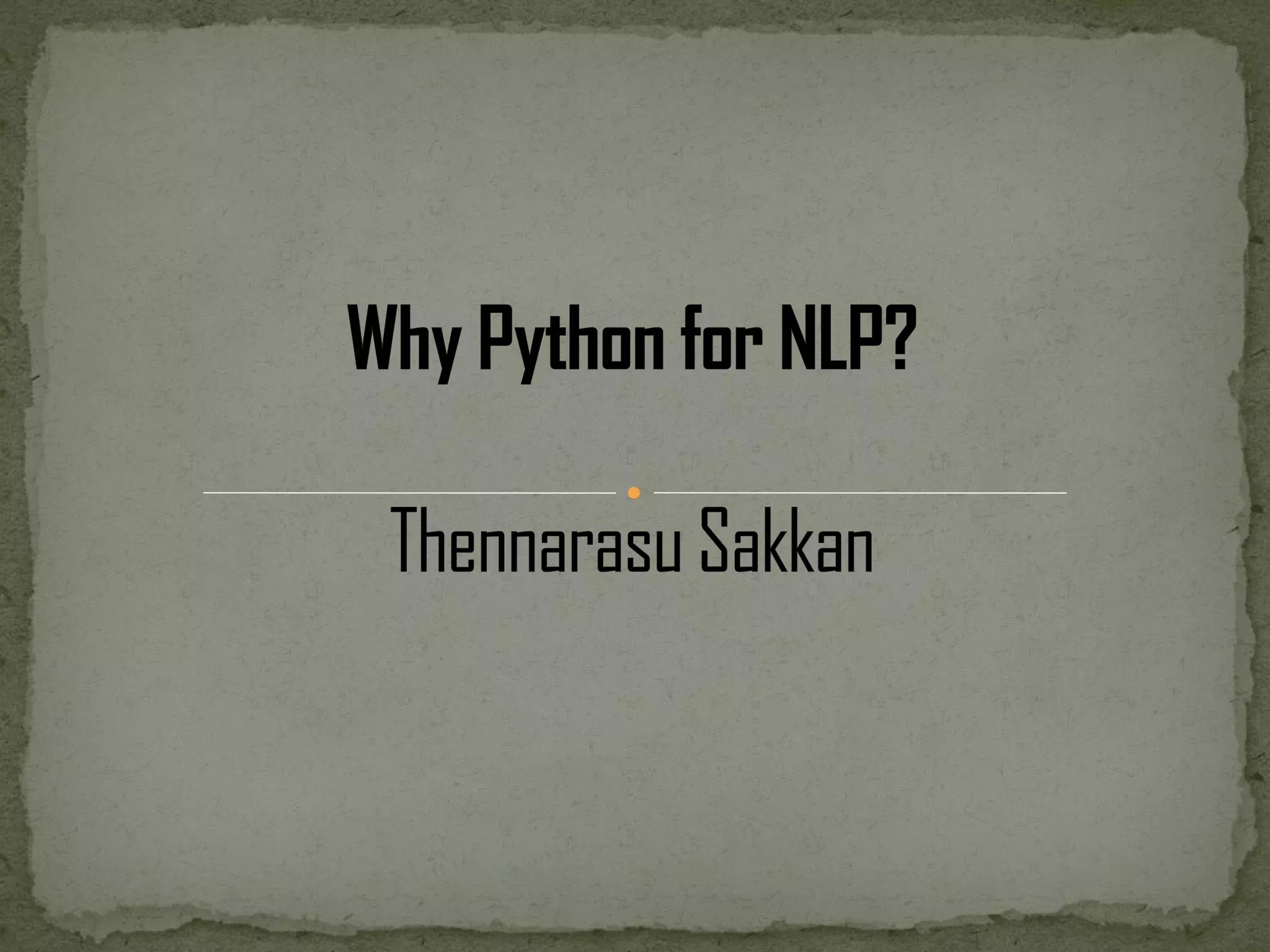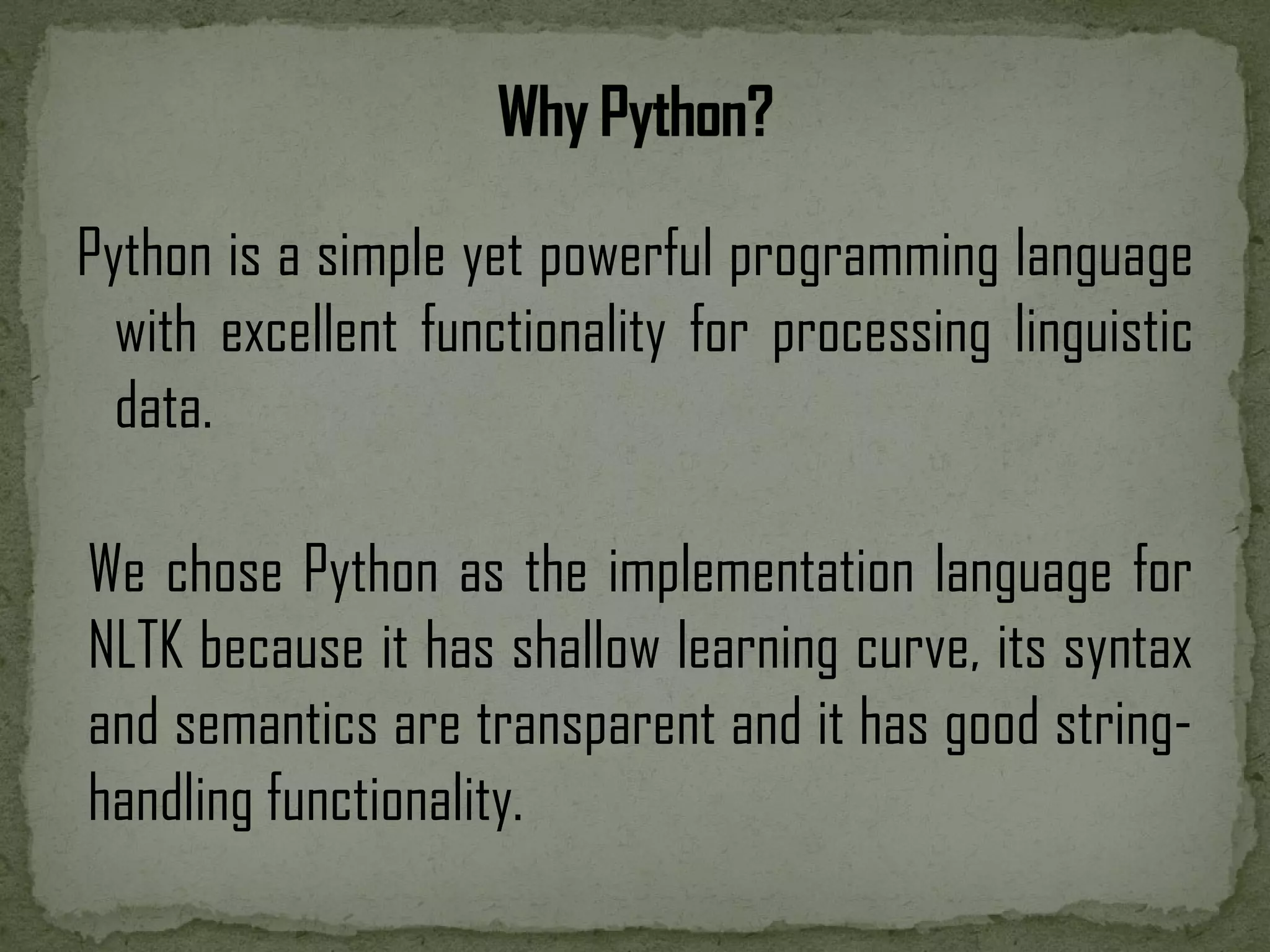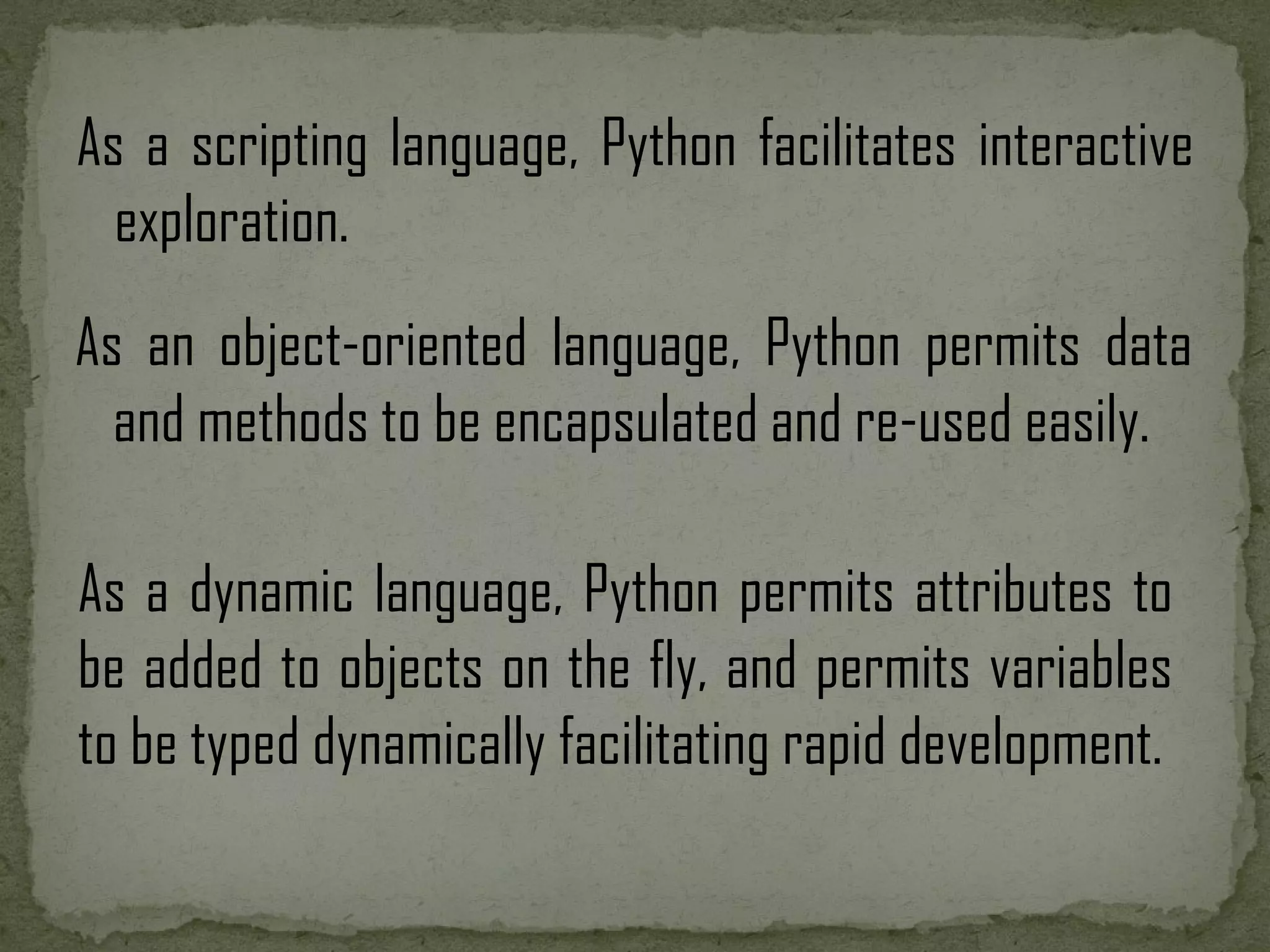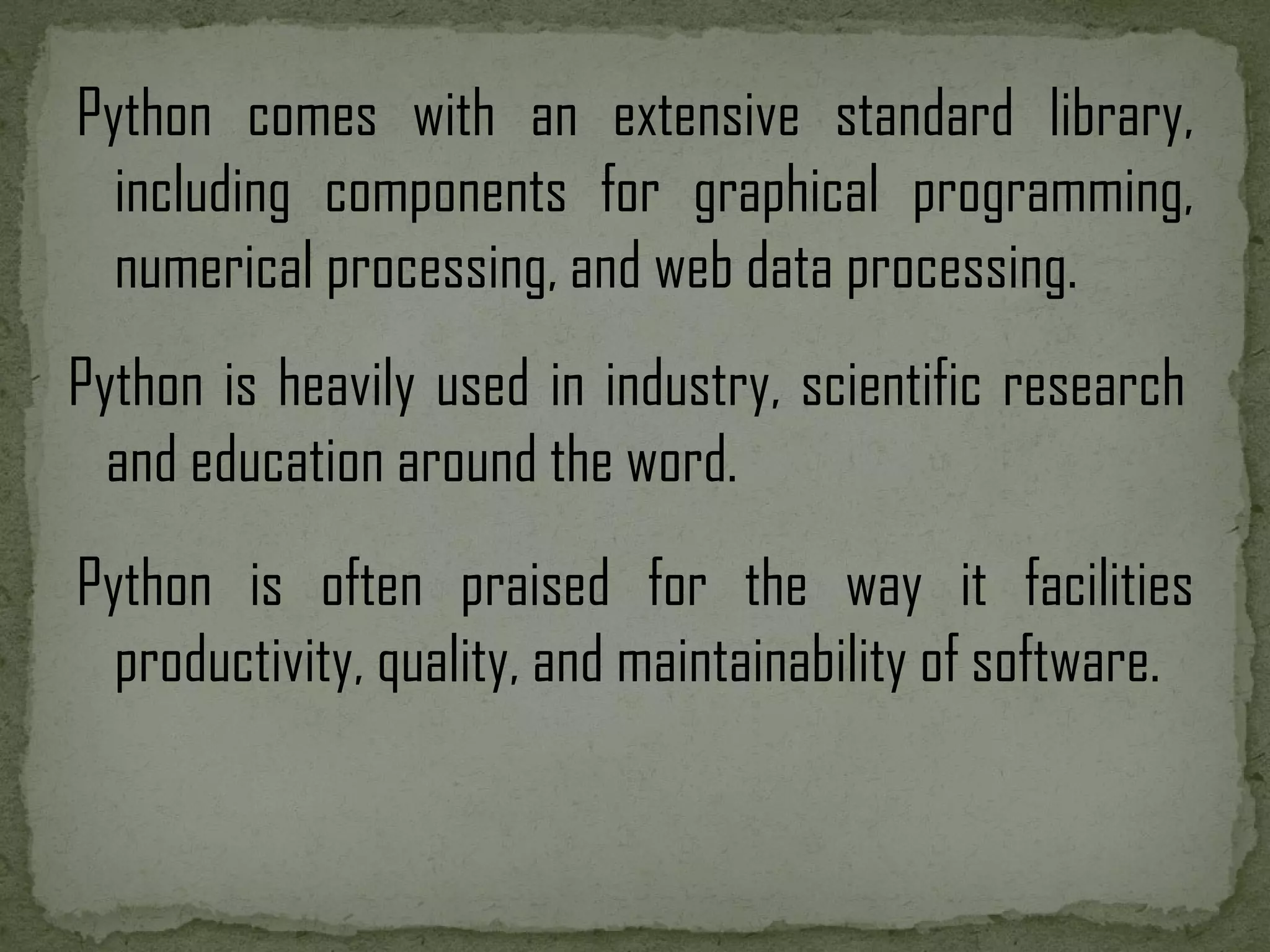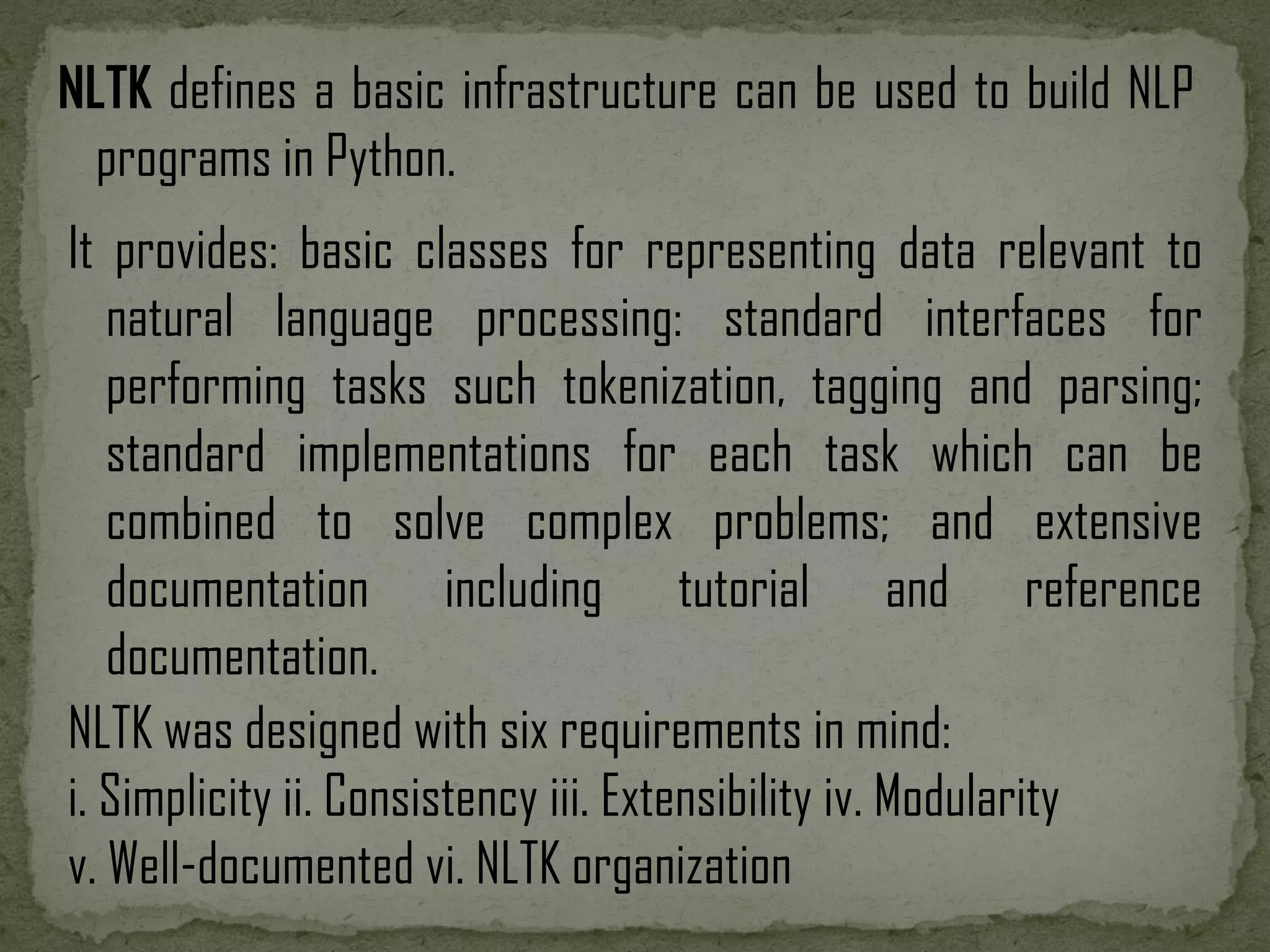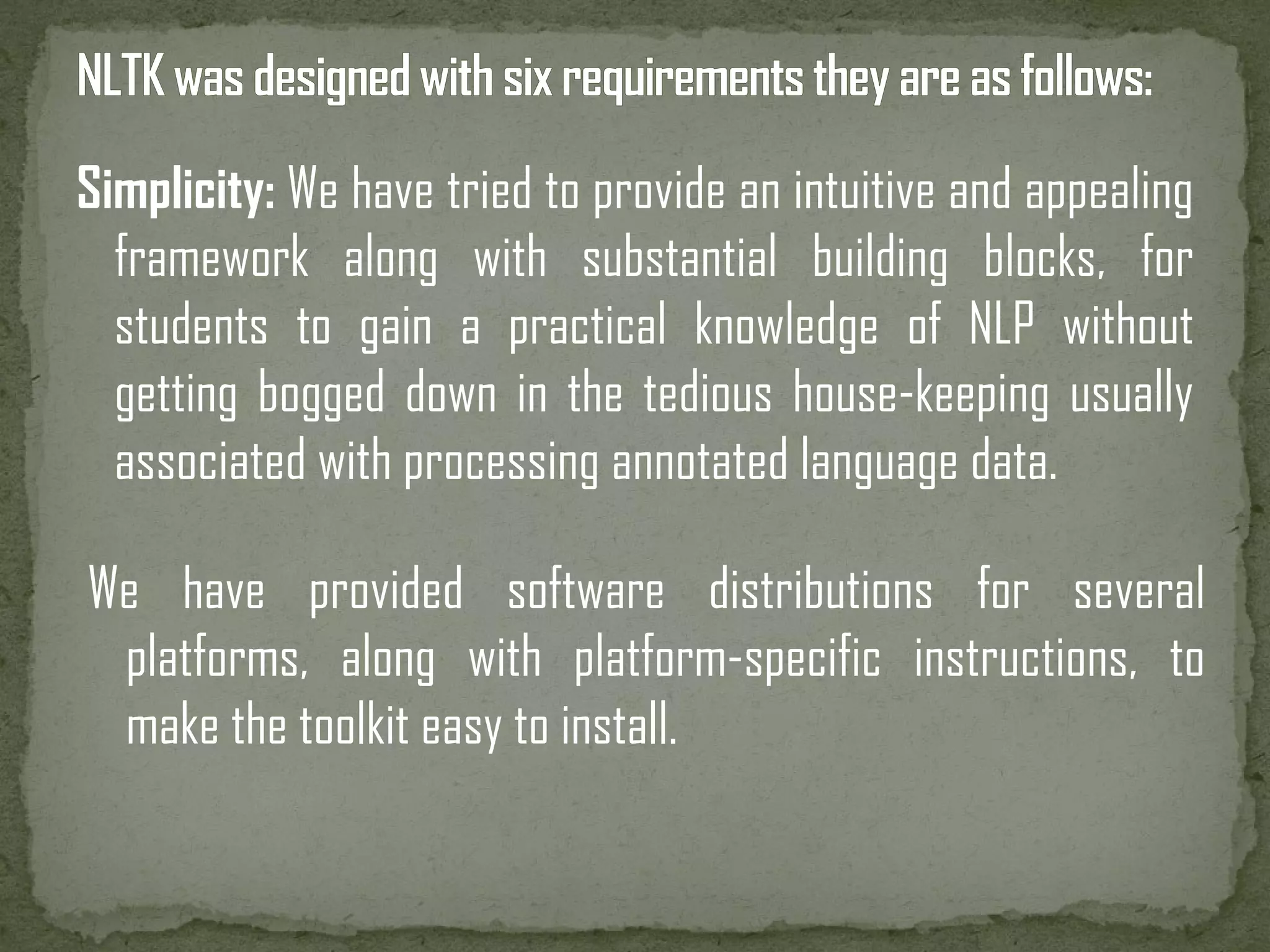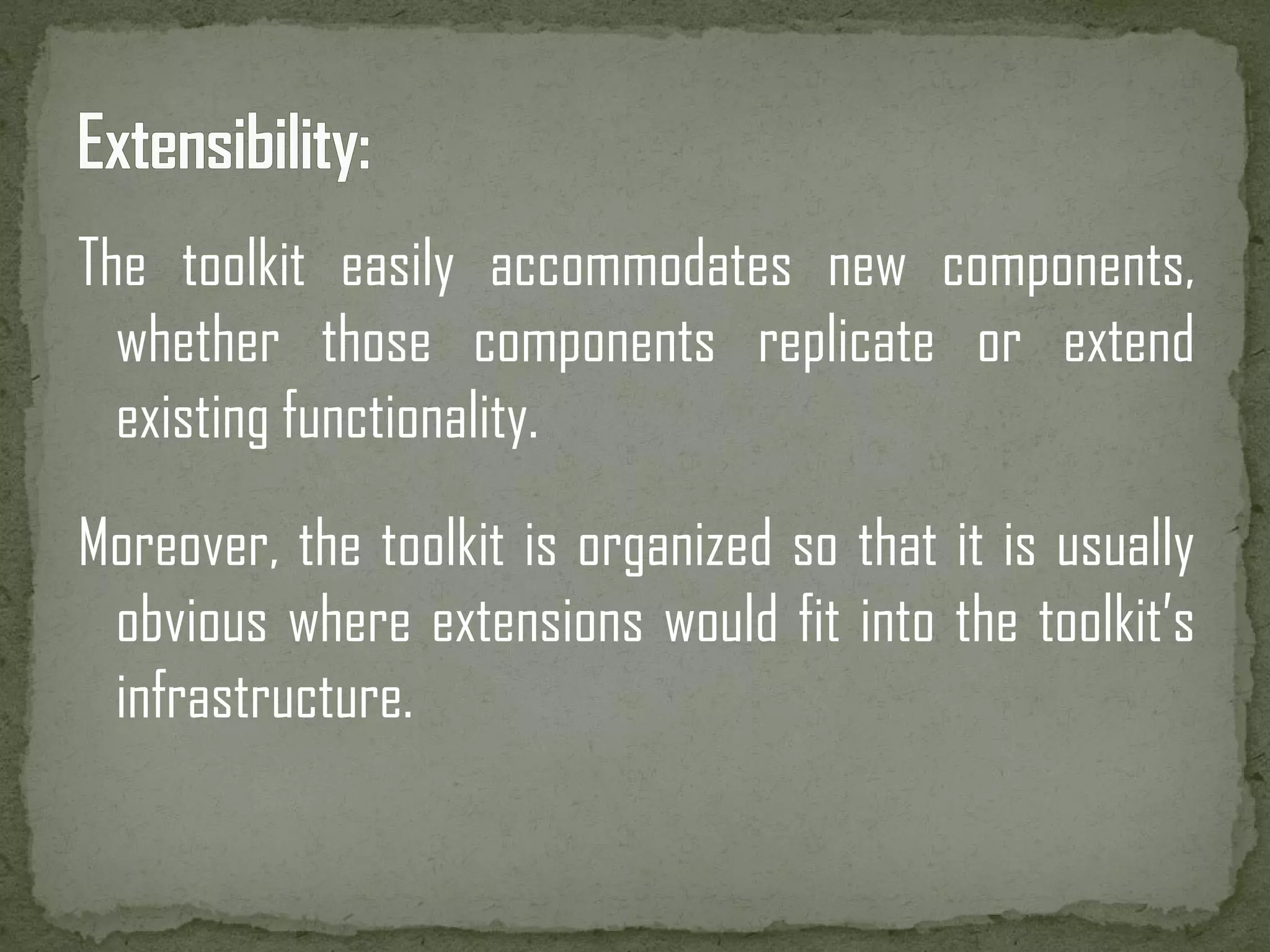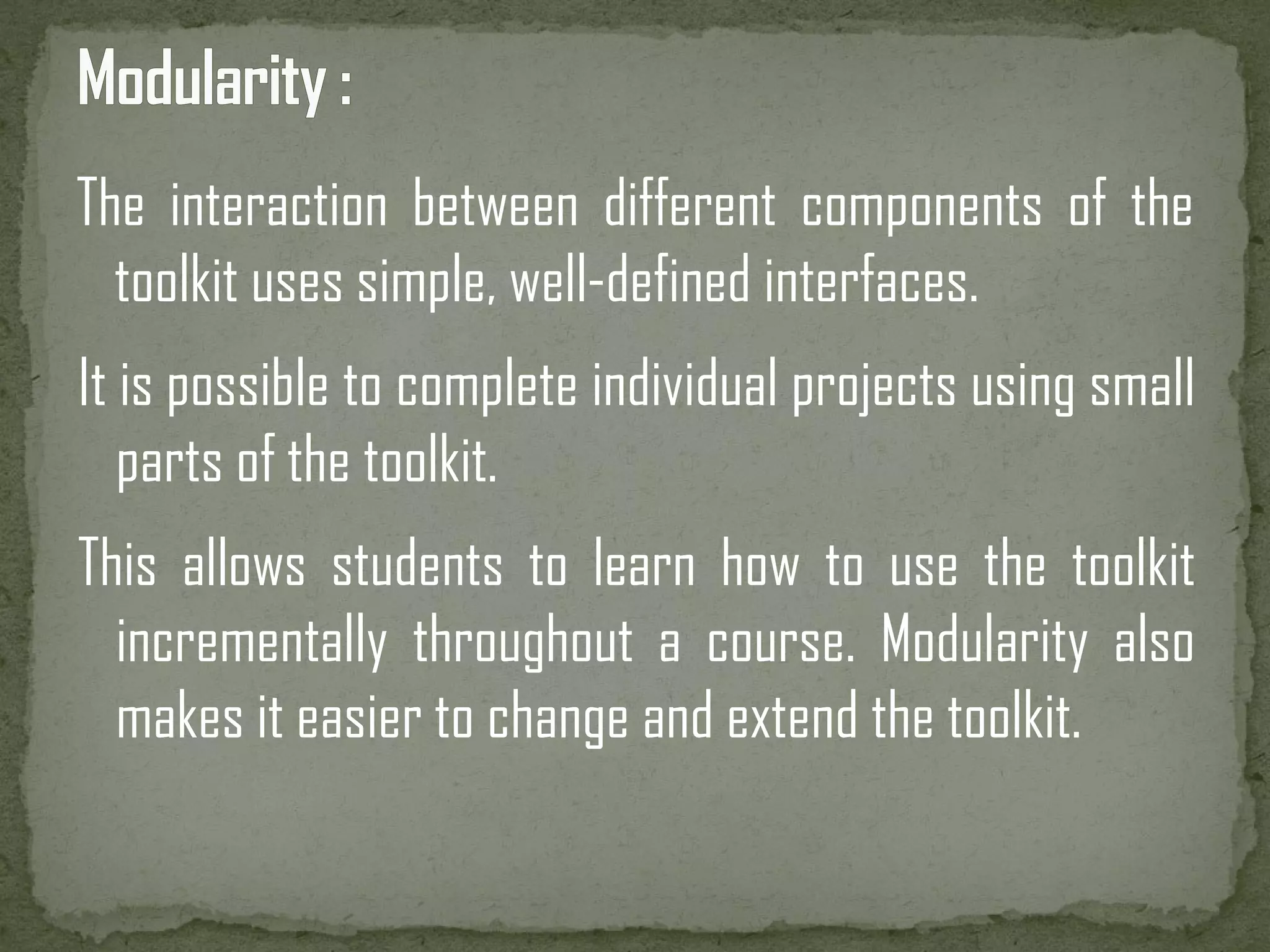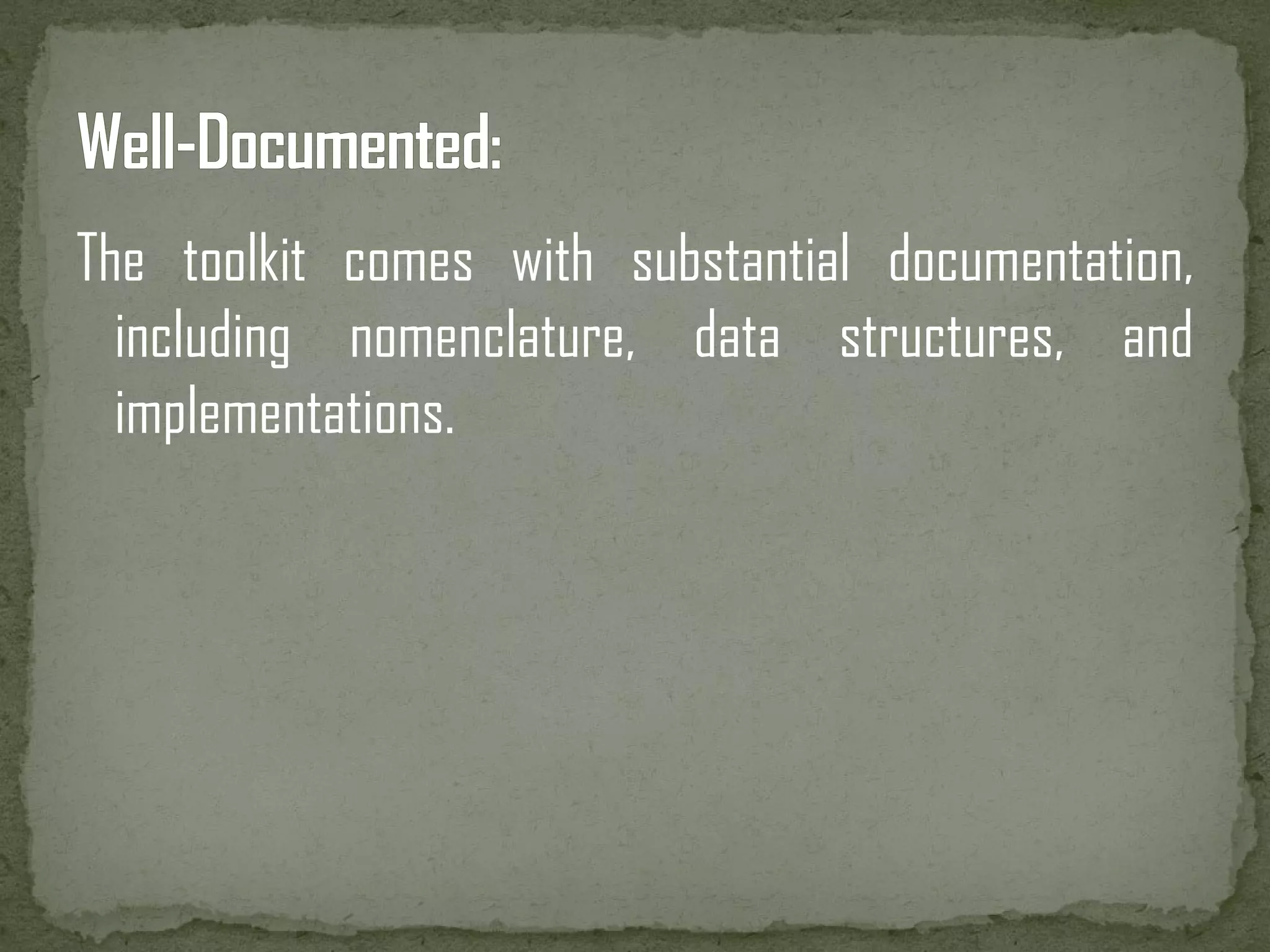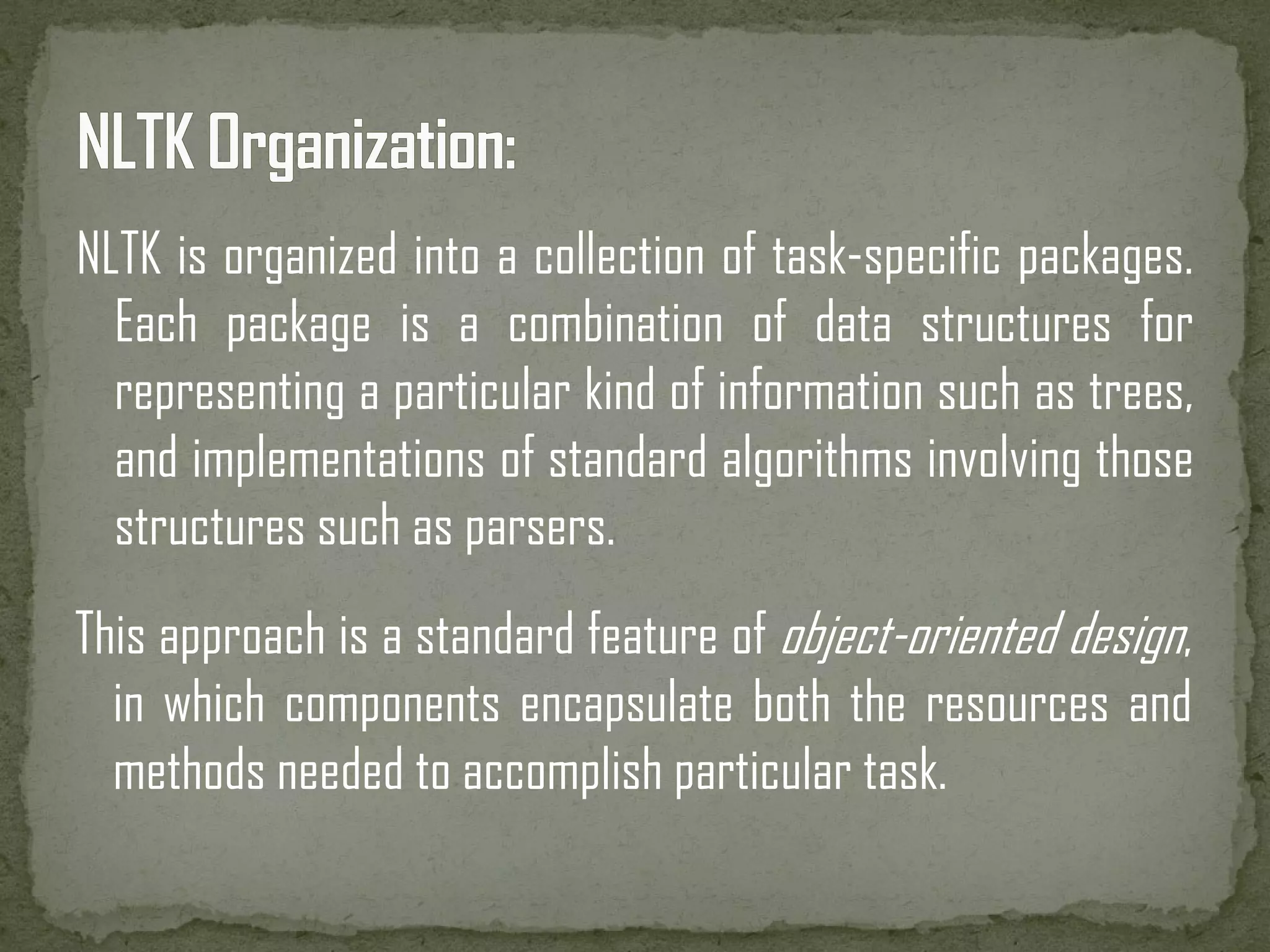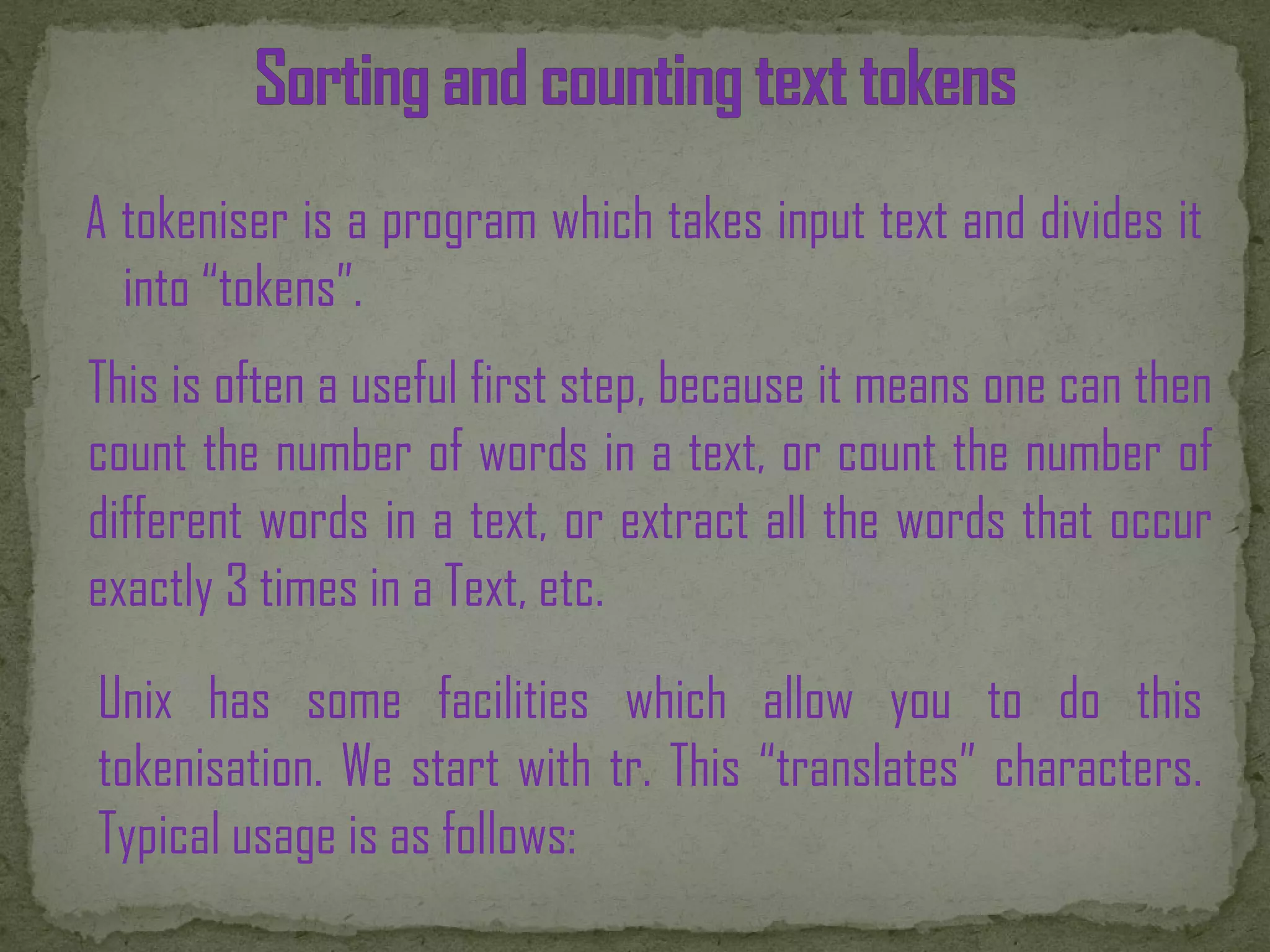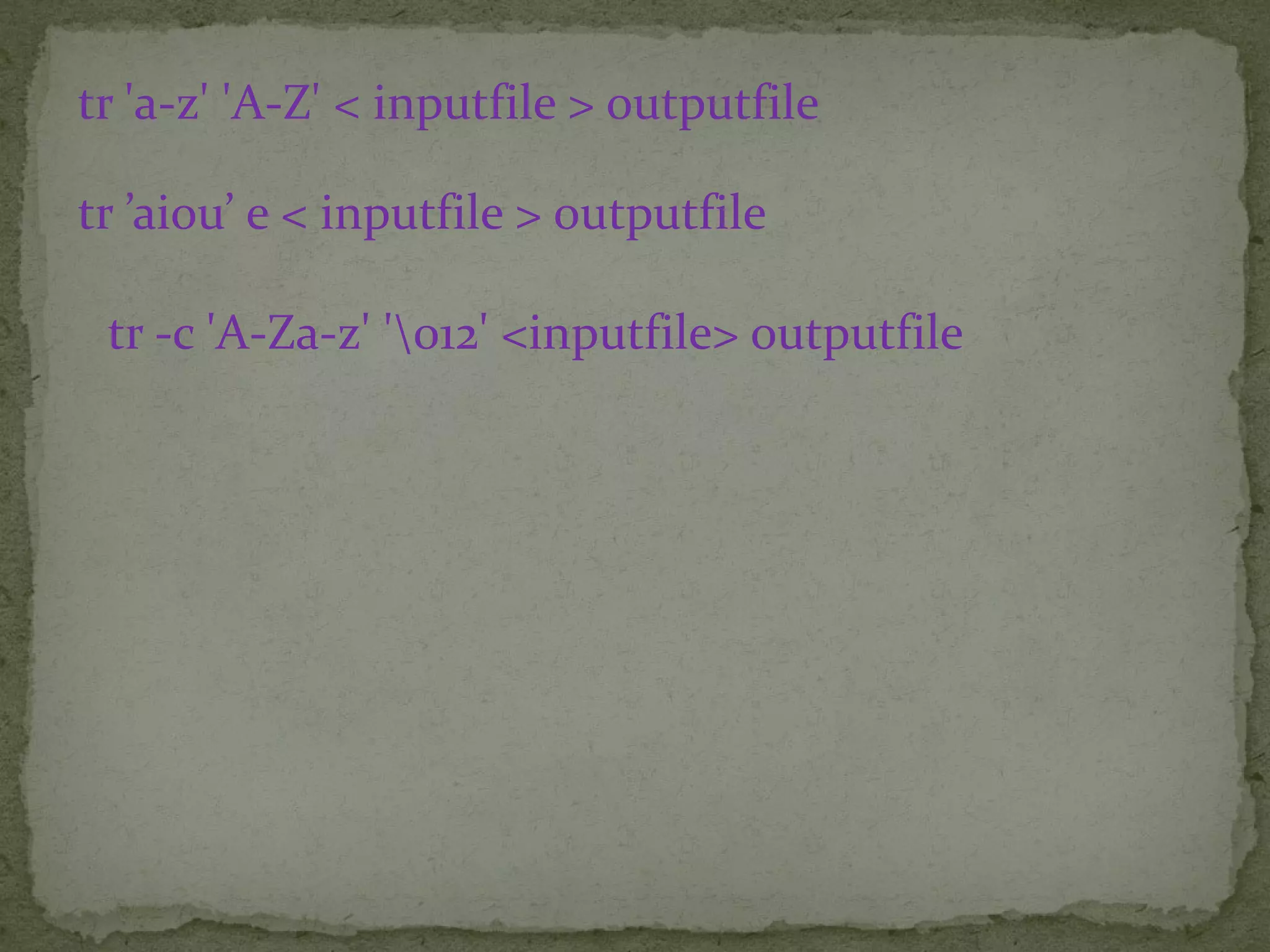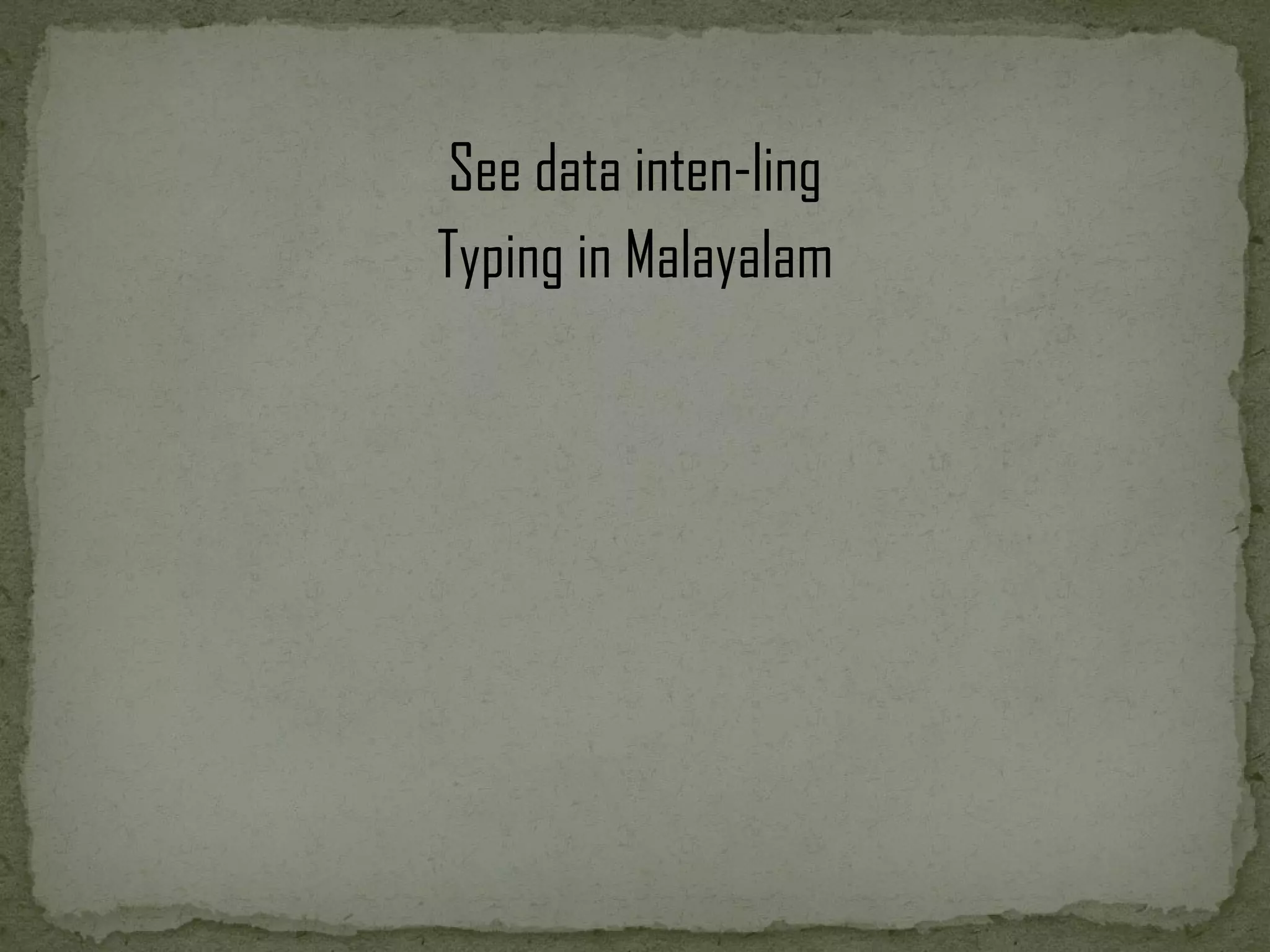The document discusses Python and the Natural Language Toolkit (NLTK). It explains that Python was chosen as the implementation language for NLTK due to its shallow learning curve, transparent syntax and semantics, and good string handling functionality. NLTK provides basic classes for natural language processing tasks, standard interfaces and implementations for tasks like tokenization and tagging, and extensive documentation. NLTK is organized into packages that encapsulate data structures and algorithms for specific NLP tasks.
